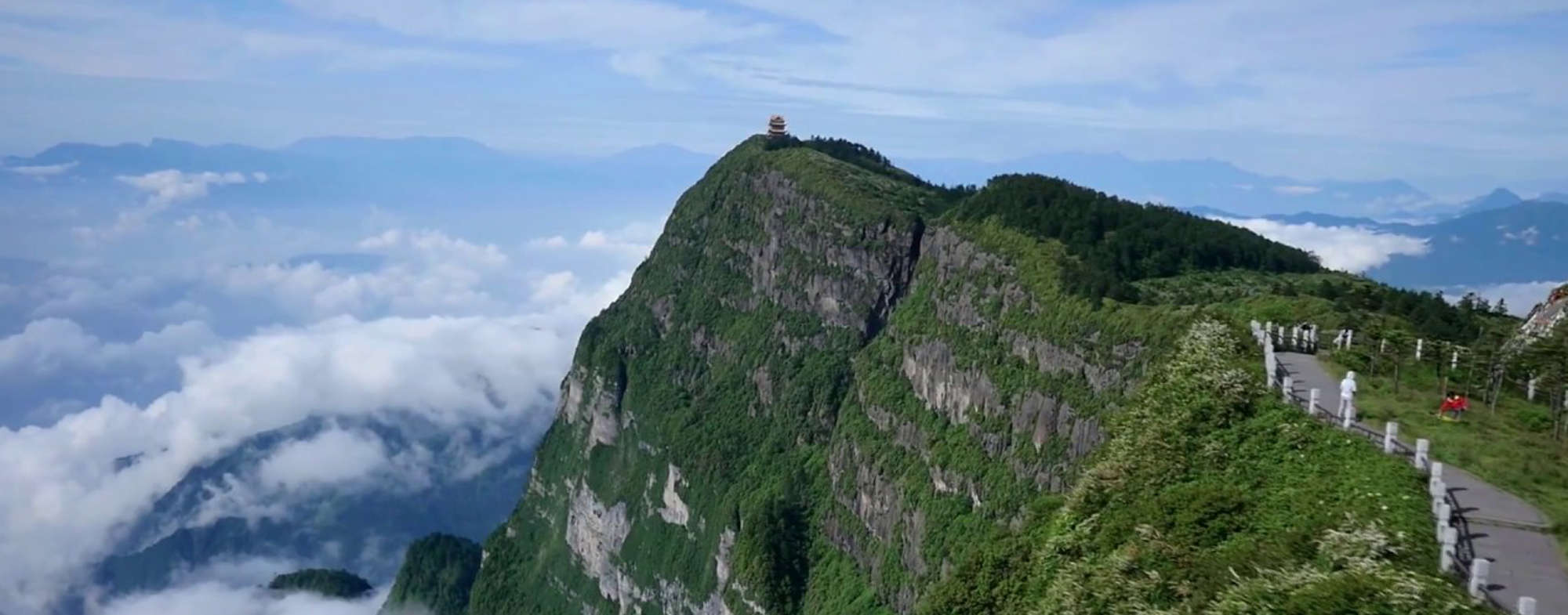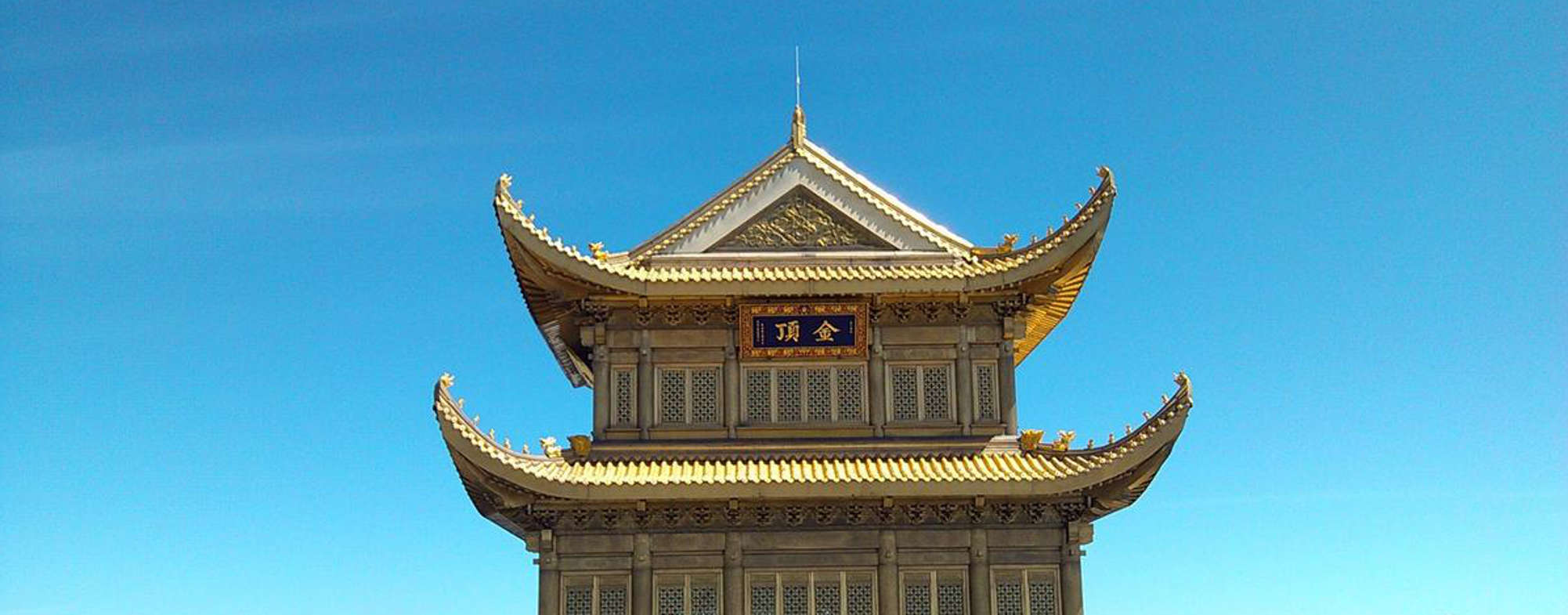SOFLETE Travel - Chengdu Pt. 2
A continuation of our Chengdu travels.
As we turned off the highway and onto the main road through Emei Shan Town at the base of one of China’s most important mountains, I sensed the heaviness of urban sprawl melting away. The main road was dotted with brightly lit restaurants and souvenir shops, but beyond that, there were only a few dim side streets surrounded by darkness. Two minutes later, the town was already in our rear view mirror as we hugged the corners of a smooth, windy road through a thickly forested area en route to Baoguo Temple. While I had visited countless sacred Buddhist sites before, this would be my first opportunity to sleep in one. We had arranged the stay beforehand with Patrick, our guide. Although the temple was closed to the public at this late hour, Patrick led us through a side entrance where he warmly greeted the attendant. A minute later, awestruck, we followed Patrick through the darkened, desolate temple on our way to our modest dormitory. He provided us with clean linens and hot water, reviewing the house rules (“Don’t stay out late!”) before taking his leave.
After settling in, we decided to check out the town and assuage our hunger. Famished after an eventful day, we headed straight to the hot pot restaurant suggested by Patrick. We intuitively knew we had made the right choice before even sitting down- the place just had that awesome, welcoming vibe. Perhaps it was the genuinely happy wait staff, the tables full of satisfied locals, or the towering piles of fresh meat and vegetables our front that gave it away. Hot pot is a nationally famous dish that is as fun to eat as it is tasty. After choosing a broth flavor (except in Sichuan, where the only flavor is “spicy”), the wait staff deliver a cauldron of the bubbling liquid to your table, where it is warmed by a gas burner. Next, you choose from a nearly infinite variety of vegetables, mushrooms (our favorite is the thick, black “wood ear” variety), tofu, and savory meats. Each of these ingredients come in the form of miniature skewers, called “chuan.” Finally, you cook the chuan yourself in the broth, preferably washing it down with a cold beer. We remained bundled up at our table outside (the Southern half of China receives no government-subsidized heating in the winter, so it makes no difference whether your inside or out), but the fiery broth and the endless varieties of moonshine distilled from local fruits and herbs kept us toasty.
That inner warmth would prove to be especially critical during our long night buried under blankets in the chili confines of the monastery. Despite the cold, though, our stay there was absolutely unforgettable. We awoke initially around 5:00 A.M. to the sound of the monks chanting. Fortunately, the quiet monotony of the chants lulled me right back to sleep again, and after a solid rest we emerged from our room a couple of hours later. With the monks meditating and the doors to the public not yet open, the grounds were entirely still once more. The well-kept confines, shrouded in mist in the inky pre-dawn light, left an indelible impression that stays with me to this day.

Finally, it was time for our journey to the top of Emei Shan (Mount Emei), the moment we had been waiting for. Emei Shan is the site of the first Buddhist temple built in China during the 1st Century CE, and still regarded as one of the country’s holiest sites today. While many of the mountain’s original temples have been lost to fires or other unfortunate ends, about thirty of them still dot the mountainside and can be visited on a two-day hike to the top. Unfortunately, our time was limited, so we had to make do with a shorter route: we took a bus from the main station in town part way up to Wannian Temple, the oldest surviving Emei Temple, then hiked the last few hours to the summit.
Sadly, the peaceful feeling from the monastery vanished as soon as we stepped foot in the chaotic, tourist-choked bus station, and seemed destined never to return as we started our ascent amidst a gaggle of fellow travelers sporting jeans, suits, dress shoes, stilettos and selfie-sticks. Fortunately, the crowds progressively thinned as the trail became steeper. Some were deterred by the icy steps, only a minor inconvenience for us thanks to the metal-toothed crampons Patrick wisely lent us. Finally, we reached the lower terminus of a cable car, which about 95% of the remaining tourists opted for. After that, the experience was completely renewed; at last, we were able to truly enjoy the mountain serenity, suddenly noticing the translucent icicles and virgin, white snow all around.

Counterintuitively, the higher we got, the warmer we felt, the thick grey clouds that had accompanied us from the beginning suddenly punctured with bright rays of sunlight. We took off our crampons and hats, the snow on the concrete steps melting away as the predominant color of the scenery shifted from white to green. At last we charged through the clouds entirely, suddenly bathed in radiant sunlight as we feasted our eyes on an ocean of bright blue sky. When we finally arrived at the mountaintop, giant billows of fragrant smoke came into view, emanating from an enormous incense station at the foot of a wide, grand, concrete staircase. Rising above the throng of worshipers with their vermillion candles were two rows of perfectly white elephants with golden saddles, and beyond that, a towering incarnation of the Buddha, his three heads and twelve faces nearly impossible to look at directly through the sunlight’s glare. Serving as the Buddha’s backdrop was perhaps the most impressive man-made structure I have encountered in all of China, the magnificent Jinding Temple, every golden centimeter of its fortress-like structure radiant against the perfect sky.
Walking to the edges of the crowd, we gazed in amazement upon endless waves of cotton-white clouds stretching toward the limitless horizon, punctuated here and there by other peaks with their respective pagodas and temples. This precise image had inspired generations of Chinese poets and artists to create their masterpieces, and as we stood there, I felt a connection across time and space to those who had come before me to appreciate this same incomparable landscape. After just three days in Sichuan, I can fully attest that this is indeed a “Heavenly Land of Plenty.” Should you ever have the opportunity to visit China, be sure to reach beyond Beijing and Shanghai towards this remarkable part of the country, overflowing with natural beauty, history, and culture.
Eric Carlson is currently the Dean of Students at Beijing National Day School and hopes that his photo journals will inspire more people to #DieLiving





